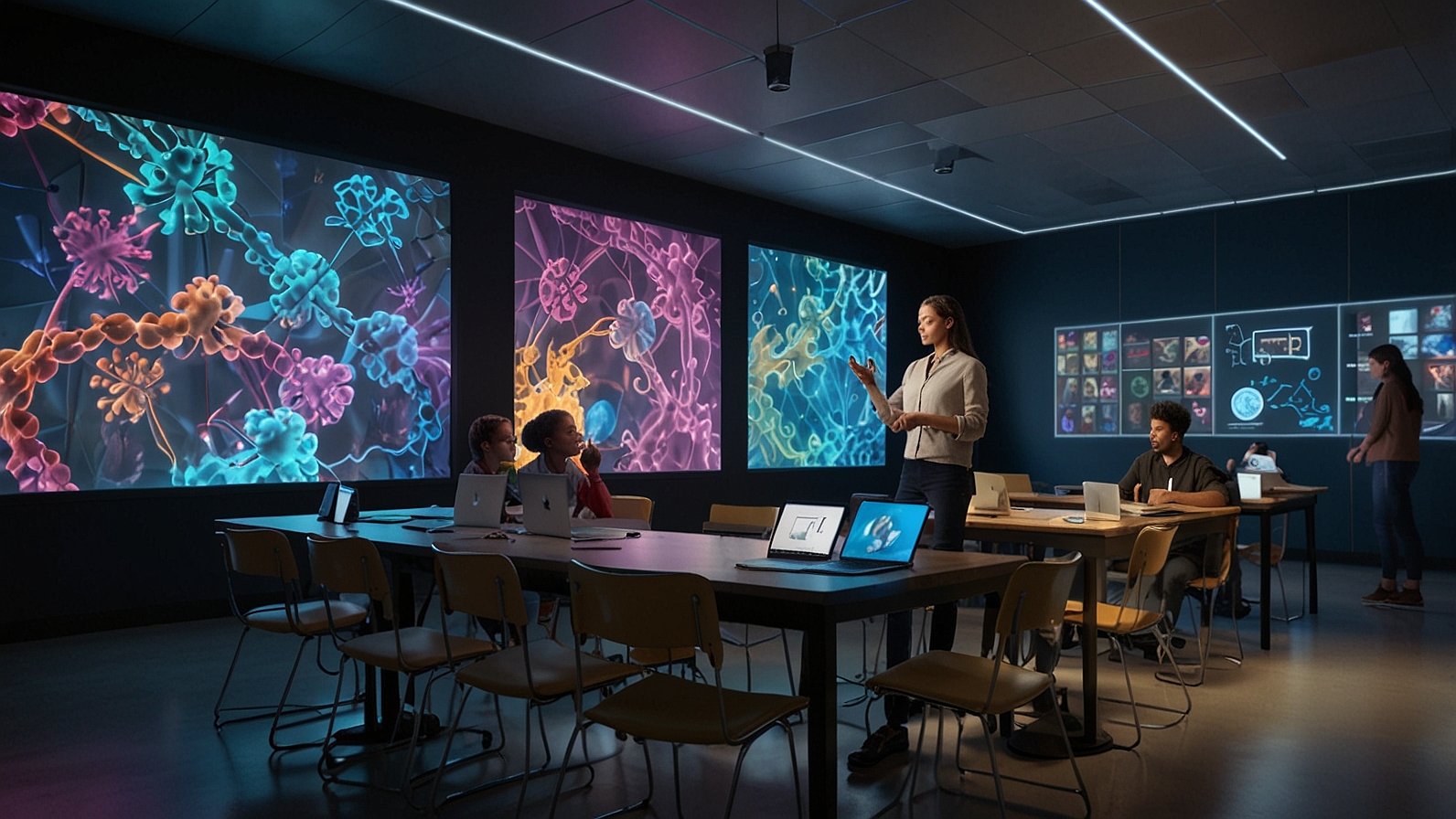Assume this: A patient battles aggressive cancer. Standard genetic tests come back “normal,” but something’s clearly wrong. Deep in their chromosomes, tiny sections of DNA have flipped upside down—invisible to routine scans, yet driving the disease. Sounds like science fiction? Thanks to an incredible tool called dGH a, this scenario is becoming solvable reality.
dGH (directional Genomic Hybridization) isn’t just another lab technique. It’s like giving scientists super-powered glasses to see the most delicate, easily missed twists and turns within our chromosomes—especially inversions. Think of an inversion like flipping a paragraph in a book upside down. The words are all there, but the meaning is scrambled. In our DNA, these hidden flips can disrupt vital genes or regulatory signals, fueling cancers or marking exposure to harmful toxins. dGH’s unique, strand-specific approach shines a spotlight on these elusive changes, making it a game-changer in precision medicine and environmental safety. Let’s dive into how this remarkable technology works and why it matters.
What Exactly is dGH and Why is it Special?
Simply put, dGH is an advanced molecular cytogenetic technique. It goes far beyond traditional methods like karyotyping or FISH (Fluorescence In Situ Hybridization), which are great at spotting large-scale changes—big deletions, duplications, or whole chromosome gains/losses—but often miss the subtle stuff happening within a single chromosome arm.
Here’s what makes dGH stand out:
- Strand-Specific Superpower: Unlike older methods, dGH can tell the difference between the two complementary strands of the DNA double helix. This is absolutely crucial for detecting inversions, because flipping a DNA segment inherently changes the direction of its sequence on the strand.
- High-Definition Mapping: It provides incredibly detailed maps of chromosome regions, pinpointing the exact breakpoints where genetic material has been rearranged. This precision is vital for understanding the functional impact.
- The Inversion Hunter: Its primary claim to fame is its exceptional sensitivity and accuracy in detecting inversions, both large and surprisingly small (down to just a few kilobases), that are completely invisible to conventional techniques.
- Beyond Just Structure: By revealing the directionality of sequences, dGH offers insights not just into structure, but potentially into how genes are regulated in their specific genomic neighborhood.
dGH vs. Conventional Cytogenetics: Seeing What Others Miss
| Feature | Conventional Karyotyping/FISH | dGH |
| Detection Scale | Large changes (Millions of bases) | Fine-scale (Thousands of bases) |
| Inversion Detection | Poor, especially small inversions | Excellent, highly sensitive |
| Strand Specificity | No | Yes |
| Breakpoint Resolution | Low | High Precision |
| Ideal For | Aneuploidy, large rearrangements | Subtle intrachromosomal changes, inversions |
Read also: Unraveling the Tapestry of Ztec100.com: A Multifaceted Journey through Technology, Health, and Insurance
How Does dGH a Actually Work? (The Simple Version!)
Don’t worry, we won’t get lost in lab jargon! Imagine you’re trying to assemble two identical jigsaw puzzles, but someone flipped a small section in one puzzle upside down. Standard methods might just check if all the pieces are present and connected – both puzzles pass. dGH, however, uses special probes that act like arrows on each puzzle piece. It checks not only if the pieces connect, but also the direction each arrow is pointing.
- Probe Design: Scientists create fluorescently labeled DNA probes designed to bind specifically to known sequences on one specific strand of a target chromosome region. These probes have inherent directionality.
- Hybridization: These directional probes are applied to chromosomes prepared on a microscope slide. They seek out and bind to their exact matching sequence.
- Direction Check: This is the magic step. dGH detects the orientation in which the probe binds. If the chromosomal DNA in that region is in its normal orientation, the probe binds one way. If an inversion has flipped that segment, the probe binds in the opposite direction.
- Signal Detection: Using sophisticated microscopy and image analysis, scientists can see the difference in probe orientation. A reversed signal pattern screams “INVERSION HERE!”
It’s like having a compass for DNA sequences, revealing which way is “north” on the chromosome strand.
Why dGH a is Revolutionizing Cancer Genomics
Cancer is fundamentally a disease of damaged DNA. While large mutations are common, researchers increasingly recognize that smaller, structural variants like inversions play a significant, often underappreciated role. dGH is proving invaluable here:
- Unmasking Hidden Drivers: Tumors that appear genetically “quiet” using standard tests might harbor critical inversions activating oncogenes (cancer-promoting genes) or inactivating tumor suppressor genes. dGH a can find these hidden culprits. For instance, studies using dGH-like technologies have revealed novel inversions disrupting genes like EGFR or ALK in lung cancers, potentially explaining unexpected treatment responses or resistance.
- Understanding Tumor Evolution: How does a cancer become more aggressive or resistant to therapy? Tracking the acquisition of new inversions over time using dGH a can provide clues about how the tumor genome is evolving and adapting.
- Improving Diagnosis & Prognosis: Identifying specific inversions associated with certain cancer subtypes or aggressive behavior allows for more precise diagnosis and better prediction of patient outcomes. This moves us closer to truly personalized oncology.
- Guiding Targeted Therapies: Some inversions create unique fusion genes that act as powerful cancer drivers (like the famous BCR-ABL fusion in leukemia). dGH can help identify such events, making patients eligible for highly effective targeted drugs designed specifically to block the rogue fusion protein.
Real-World Impact: Research groups, such as those at major cancer centers like MD Anderson or Memorial Sloan Kettering, are increasingly incorporating advanced strand-specific techniques like dGH into their genomic profiling pipelines, especially for complex or treatment-resistant cases where standard panels draw a blank.
dGH’s Critical Role in Environmental Biodosimetry
Beyond cancer, dGH a shines in another vital field: biodosimetry. This is the science of measuring the dose of radiation (or other genotoxic agents like certain chemicals) a person has been exposed to, by examining the damage in their cells. Why is this important? Think nuclear accidents, occupational hazards, or even unexpected environmental exposures.
- Sensitive Fingerprint of Damage: Radiation is particularly good at causing DNA breaks that can lead to inversions when repaired incorrectly. These inversions are stable, long-lasting signatures of exposure.
- Quantifying Low Doses: Conventional biodosimetry methods (like counting chromosome breaks visible under a microscope) become less reliable at low radiation doses. dGH’s ability to detect subtle inversions offers a much more sensitive biomarker for assessing lower-level exposures that might still carry long-term health risks.
- Long-Term Tracking: Unlike some transient DNA damage markers, inversions persist in cells and their progeny. dGH a can potentially be used to reconstruct exposure events that happened years earlier.
- Environmental Monitoring: dGH could be applied to wildlife or plant populations to monitor the long-term genetic health of ecosystems near potential pollution sources or former nuclear sites.
Imagine being able to accurately assess the radiation dose received by first responders years after an incident, or monitoring the genetic health of communities near industrial sites – dGH a makes this level of precision biodosimetry possible.
The Future is Directional: What’s Next for dGH a?
dGH a is still primarily a powerful research tool, but its potential for clinical diagnostics is immense. Here’s where it’s heading:
- Integration with NGS: Combining dGH’s strength in detecting structural variants with the massive sequencing power of Next-Generation Sequencing (NGS) offers a truly comprehensive view of the genome. Platforms that integrate strand-specific information are already emerging.
- Automation & Accessibility: Making the dGH a protocol faster, cheaper, and easier to run in routine diagnostic labs is key for wider adoption. Expect improvements in probe design and automated image analysis.
- Broader Clinical Applications: Beyond cancer and biodosimetry, dGH could play roles in diagnosing complex genetic disorders where inversions are suspected but unseen, or in reproductive genetics to screen embryos for subtle chromosomal rearrangements.
- Unlocking Regulatory Secrets: By precisely mapping strand orientation, dGH may help scientists better understand how the 3D structure of chromosomes and the directionality of non-coding elements influence gene regulation – a hot topic in epigenetics.
dGH a represents a significant leap in our ability to visualize the intricate architecture of our genome. It reminds us that sometimes, the most important changes aren’t about missing or extra pieces, but about pieces that are subtly, yet profoundly, out of place and facing the wrong way.
5 Key Takeaways: Why dGH Matters
- Sees the Invisible: dGH a uniquely detects inversions and other fine-scale intrachromosomal rearrangements missed by standard tests.
- Strand Savvy: Its power comes from its strand-specific detection, revealing the direction of DNA sequences.
- Cancer Game-Changer: It’s uncovering hidden drivers in tumors, leading to better diagnosis, prognosis, and targeted treatments.
- Radiation Detective: dGH provides a sensitive, long-lasting biomarker for radiation exposure (biodosimetry), crucial for health assessments.
- Future of Precision: It’s paving the way for even more comprehensive genomic analysis as it integrates with other technologies and becomes more accessible.
dGH a proves that sometimes, you need to look really closely, and in the right direction, to find the answers hidden in our DNA. As this technology matures, it promises to deepen our understanding of health, disease, and our environment in ways we’re just beginning to grasp.
What do you think? Are there other areas of biology or medicine where you imagine such a precise “genomic direction finder” could make a big impact? Share your thoughts below!
FAQs:
- Is dGH a replacement for standard genetic tests like karyotyping?
- Not usually a replacement, but a powerful complement. Karyotyping is great for large changes. dGH excels where karyotyping fails: finding small inversions and subtle rearrangements within chromosomes. They often work best together.
- Can dGH be used for prenatal diagnosis?
- Potentially, yes, but it’s currently primarily a research tool. Its ability to detect subtle inversions could be valuable for investigating complex fetal anomalies where standard tests are normal, but clinical application in routine prenatal screening isn’t widespread yet.
- How long does a dGH test take?
- The dGH process is more complex than standard karyotyping. From sample preparation to final analysis, it can take several days to a week or more, depending on the lab’s workflow and the specific protocol used.
- Is dGH testing expensive?
- Currently, yes, it is generally more expensive than conventional cytogenetic tests due to the specialized probes, sophisticated microscopy, and complex analysis required. Costs are expected to decrease as the technology becomes more automated and widely adopted.
- What’s the main limitation of dGH?
- While fantastic for inversions and specific rearrangements, dGH typically analyzes targeted regions of the genome rather than the whole genome at once (like some NGS approaches). Designing probes for new regions also takes time. Its main strength is depth and directionality in specific areas, not necessarily whole-genome breadth.
- Does dGH only work for inversions?
- While inversions are its standout application, dGH can also detect other imbalances like very small deletions or duplications within the region targeted by its probes, especially if they affect the binding or orientation signal of the probe.
- Where can I get dGH testing done?
- Currently, dGH is primarily offered in specialized research laboratories and some advanced clinical cytogenetics labs, often for specific research projects or complex diagnostic cases referred by geneticists/oncologists. It’s not a routine clinical test available everywhere. Discuss options with your healthcare provider or genetic counselor.
You may also like: LifeDNA vs 10X Health Gene Testing Reviewed










